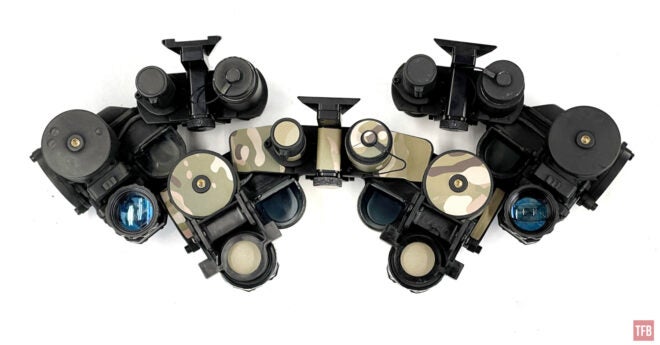Hello there, are you a fan of low-profile night vision goggles? Well, today on Friday Night Lights it is PVS-21 revisited. I have written about the PVS-21 before but I was not satisfied with that article. The subsequent articles about the accessories and monocular version of the PVS-21 are better. Well, new information has come to light that I thought was worth sharing. You can bridge two LPNVM Monocles into a functioning bridge! Plus we will take a close look at some other PVS-21 accessories not previously mentioned in my other articles.
More PVS-21 @TFB
- Friday Night Lights: Steiner CEHUD and COTM – PVS-21 Must-Haves
- Friday Night Lights: LPNVM PVS-21 A Steiner Tactical Monocle
- FRIDAY NIGHT LIGHTS: Steiner PVS-21 Low Profile Night Vision Goggles (LPNVG)
PVS-21 Revisited
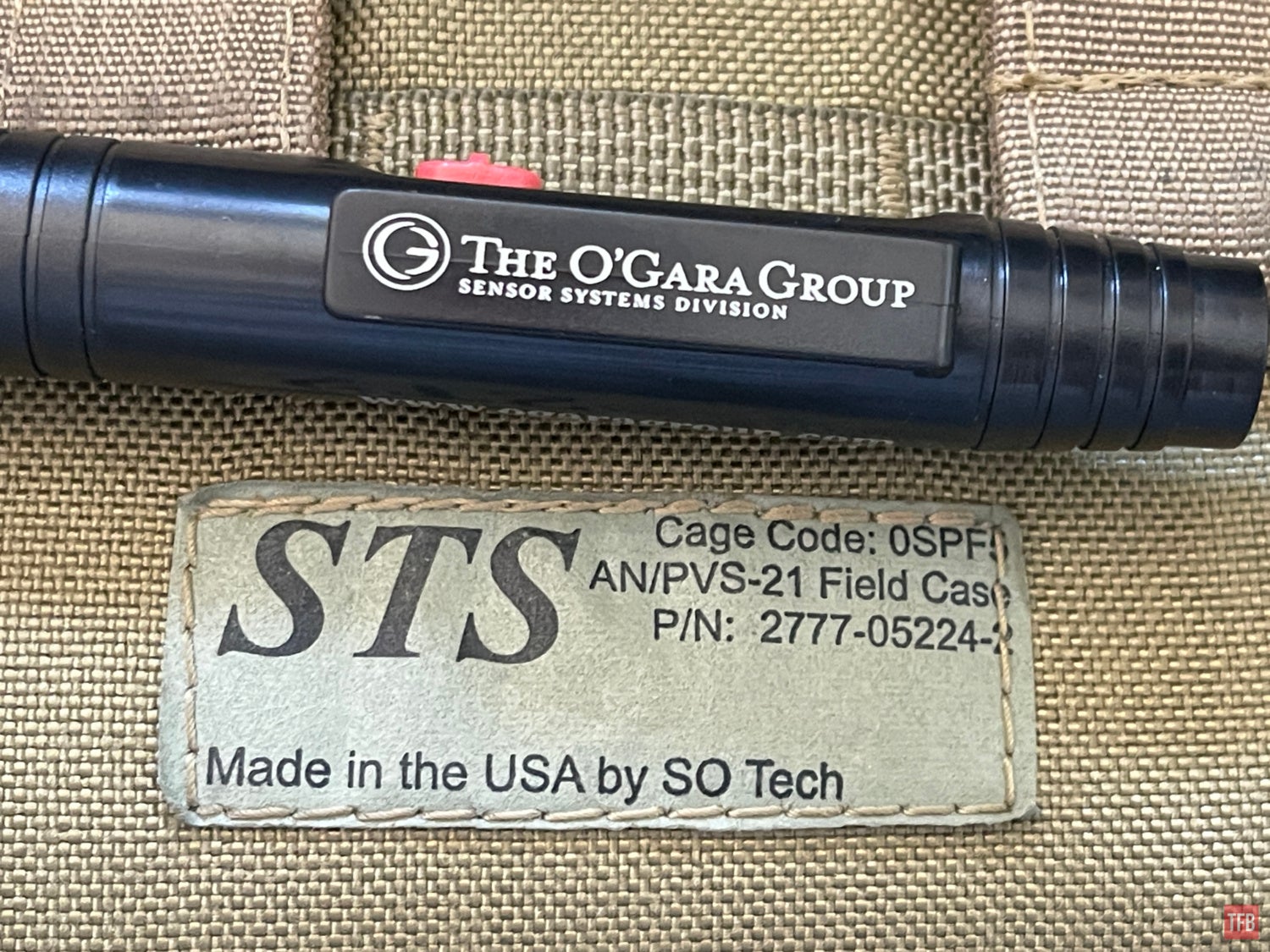
Most people associate Steiner with the PVS-21 and while that is true they are not the company that created the low-profile night vision goggle. It was actually a company called STS (Sensor Technology Systems). They were based out of the UK but The O’GARA Group represented them in the US. That was before they were bought by LDI, the people who actually designed and made the DBAL lasers and who then were acquired by Steiner.

Here is the label on an LPNVM with the STS name on it.
Two Monos To Make A Bino
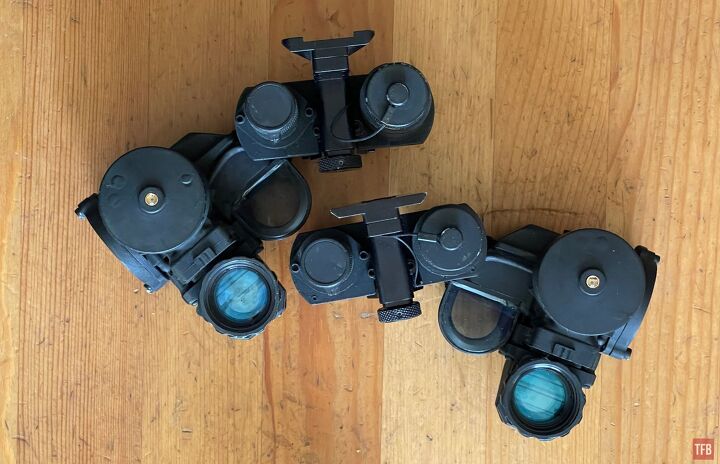
I recently acquired an LPNVM for this PVS-21 Revisited article. It came from Sean Steele of GSH. He acquired surplus PVS-21 monoculars and binoculars from the Michigan State Police.

When I purchased an LPNVM from Sean, he mentioned that I could take a left-sided one and bridge it with a right-side monocular. I have never heard of that but given the design of the monocular and the binocular versions of the PVS-21, it seems logical. So I asked Sean to lend me a left-side monocular and he obliged so I could document in this PVS-21 Revisited article.

This is NOT how you bridge two STS LPNVMs.
The IPD is nowhere close. Even if you have Fetal Alcohol Syndrome, I do not think bridged LPNVMs will work.

Also with the increased height of the KVC/RQE bridge, the HUD windows (Beamcombiner) would be positioned too low to line up with your eyes. But articulating LPNVMs are kinda cool.


In order to really bridge two LPNVMs, you need to take them apart. For PVS-21 Revisited I documented the bridging process. It seems straightforward but there is a step that I was not expecting which I will point out later.
In the back of the PVS-21 battery housing/bridge are four screws. There are two large ones behind the hinge point. These are for tightening or loosening the friction of the articulating pods. Then there are two smaller screws. Remove all of them. Then you can remove the polymer back plate. You can now see the wires and small circuit board with connectors soldered onto it. But getting access to them is difficult.
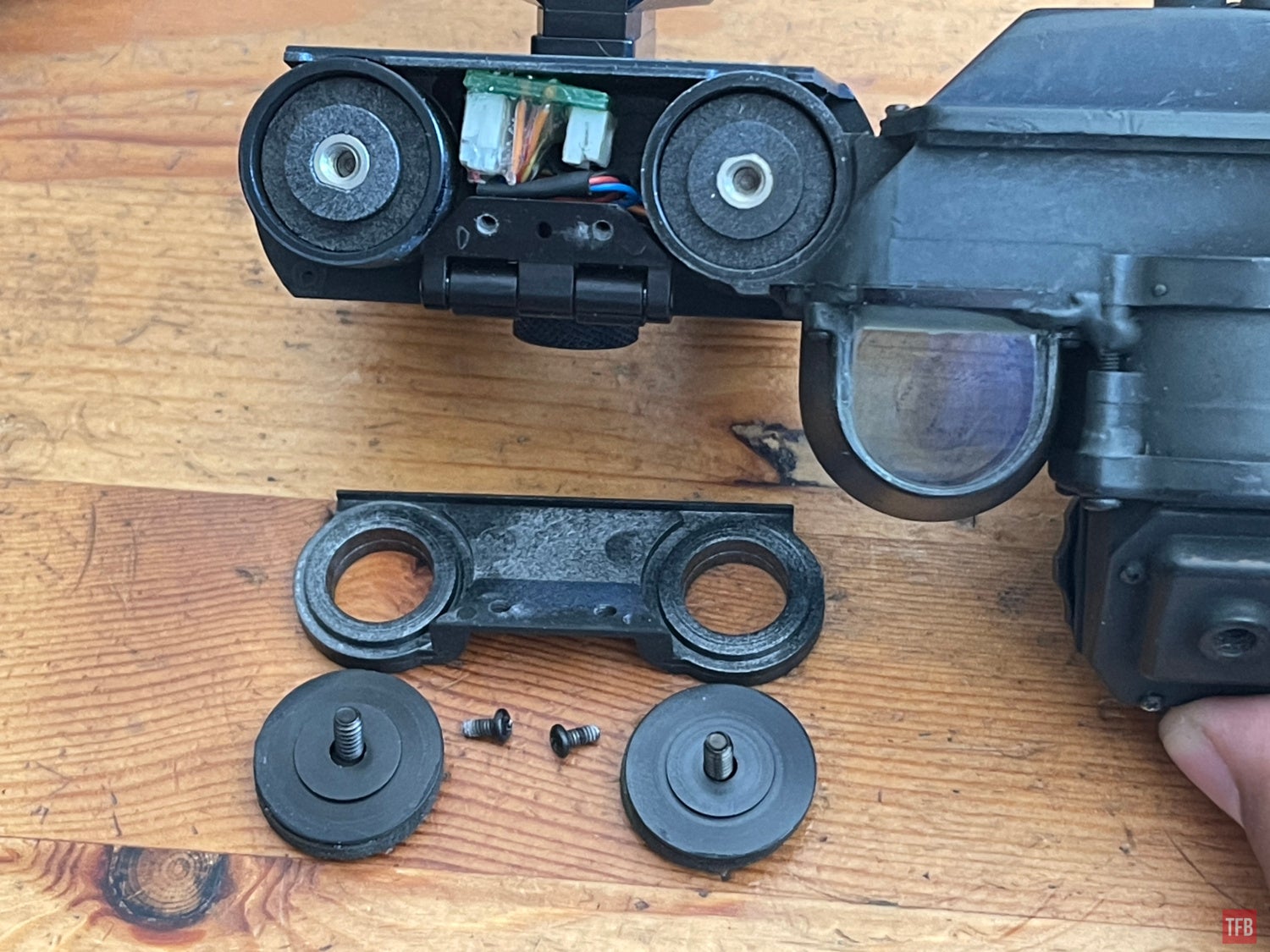
Once you remove the back plate there is a spacer that can be removed and the monocular pod can be slipped off, but be careful as it is tethered by a thin wire you can see below.
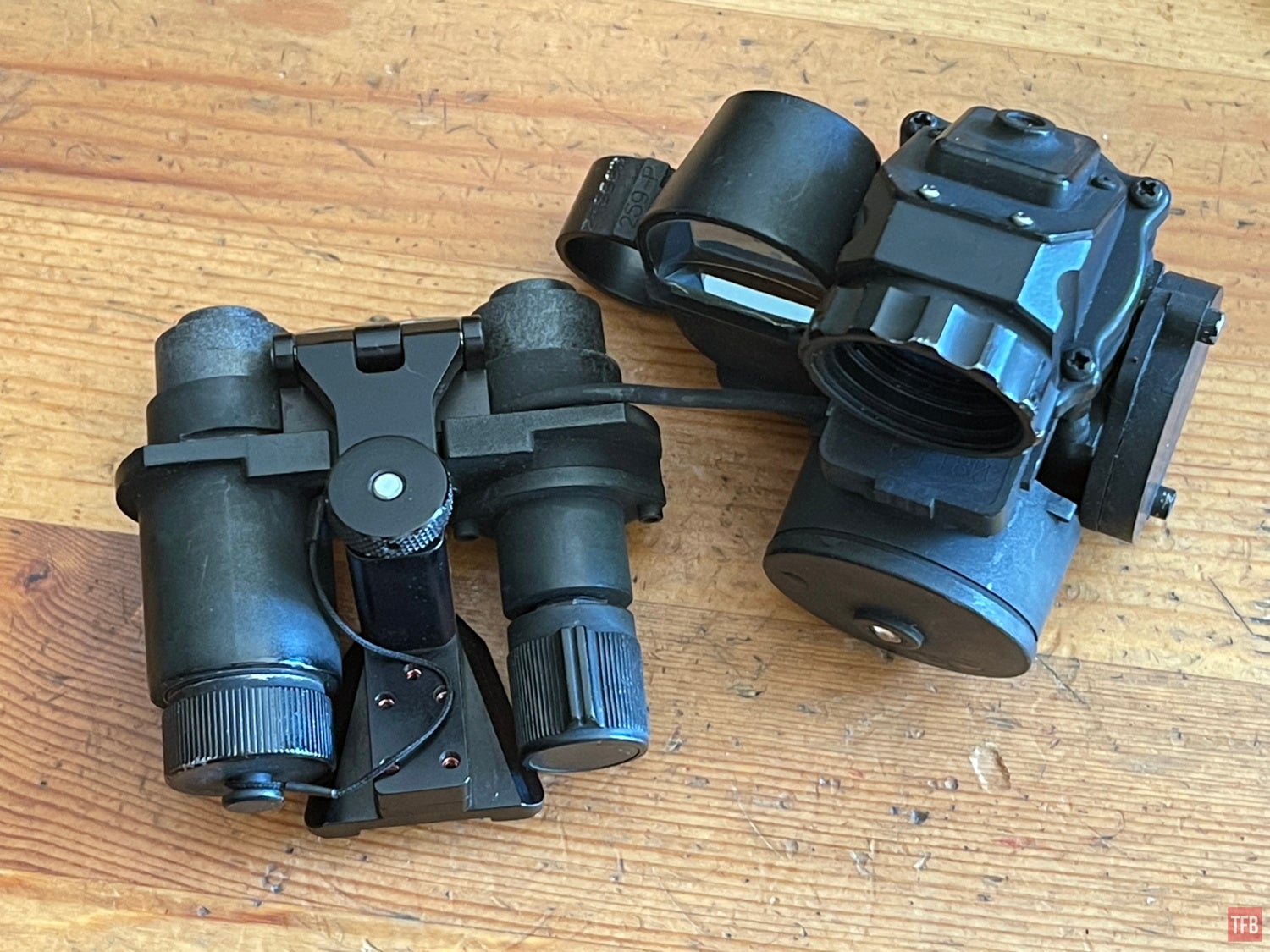
As mentioned earlier, there is a small circuit board with connectors and wires soldered to it. It sits underneath the adjustable dovetail. To make it easier to gain access to this board, you need to remove the dovetail from the bridge.
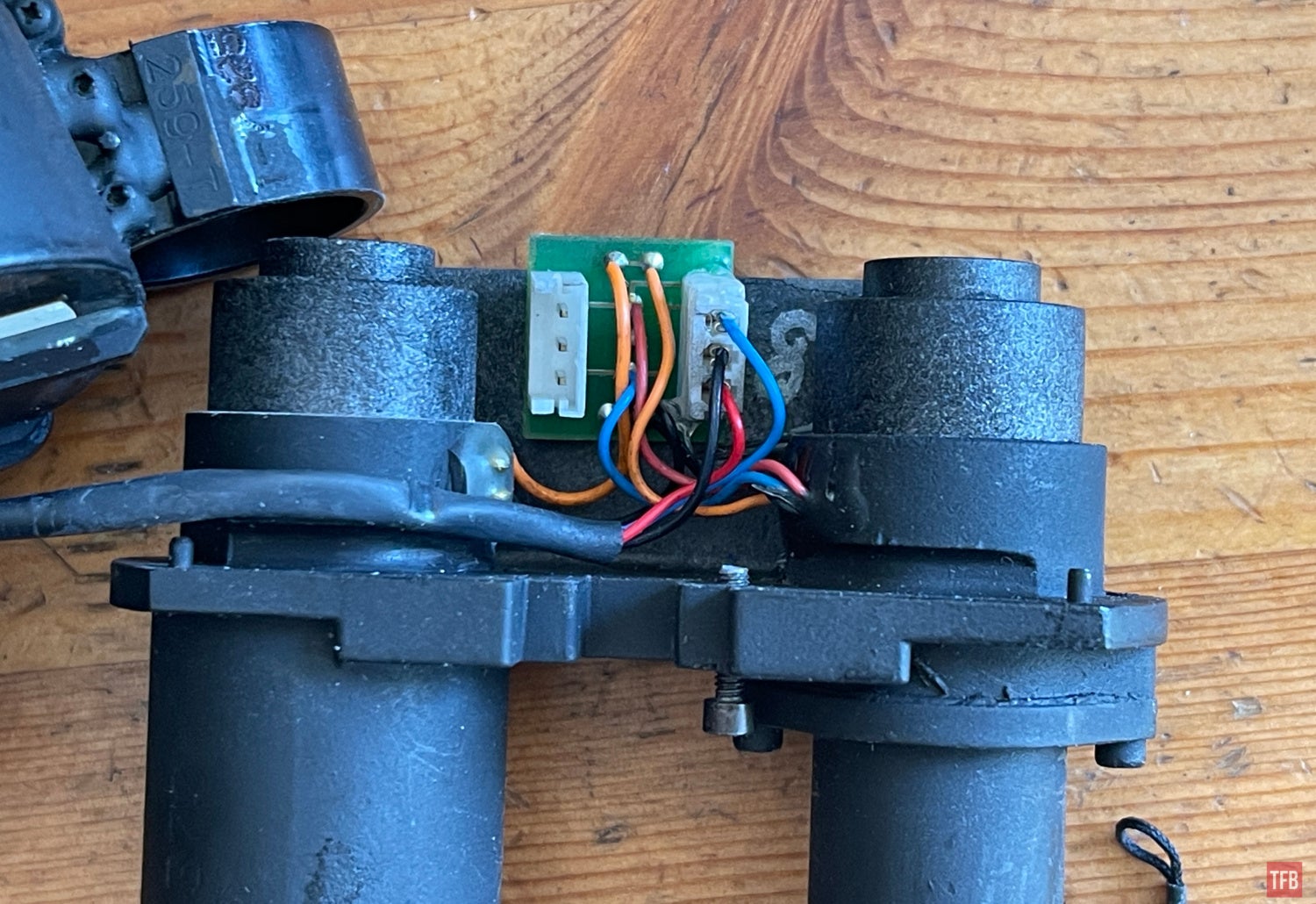
The dovetail is bolted to the bridge. There are two small screws on either side that sit next to the battery compartment and power switch. You need a long Allen wrench to remove them.



Now that the board is free, you will see it was covered in a silicone-like substance, I suspect to help with waterproofing the electronics?

You can see they covered everything in this stuff.

I used a pick to carefully remove the silicone-like coating.

You will need to remove the silicone from both donor PVS-21 monoculars. Once finished, you can install the other monocular to the bridge of your choosing.
Sean sent me a right and left PVS-21 LPNVM. One of the bridges has matching wire retaining pins. See the photo below.

While the other monocular only has the pin on one side. That pin helps keep the power cable from dropping down as you articulate the pod. It is not critical if your bridge only has one but it is nice to have for bridged monoculars. A binocular PVS-21 has those pins.
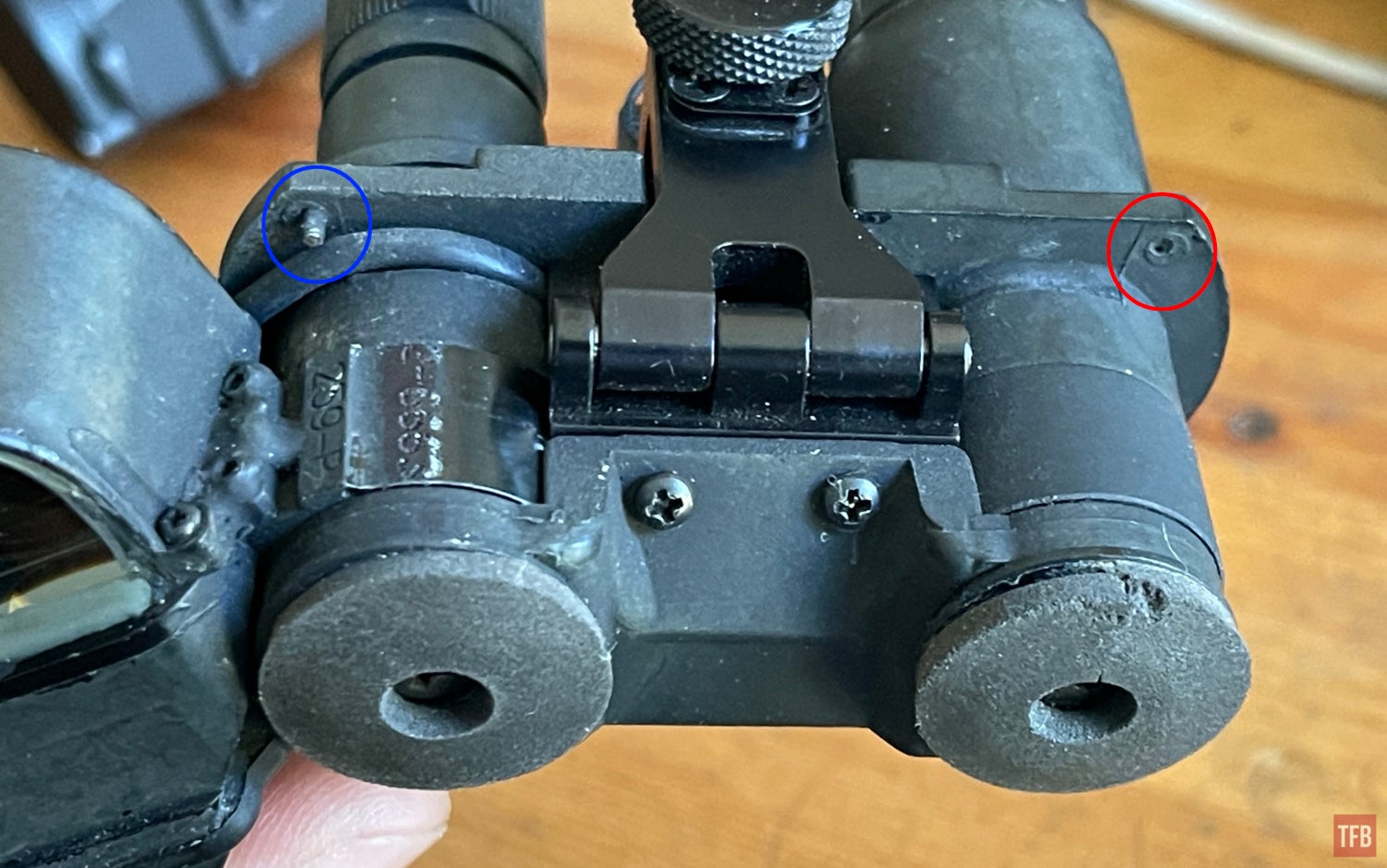
Now that you assembled a working PVS-21 binocular, you need to reinstall the dovetail and back plate.

PVS-21 Revisited – STS/O’GARA Accessories
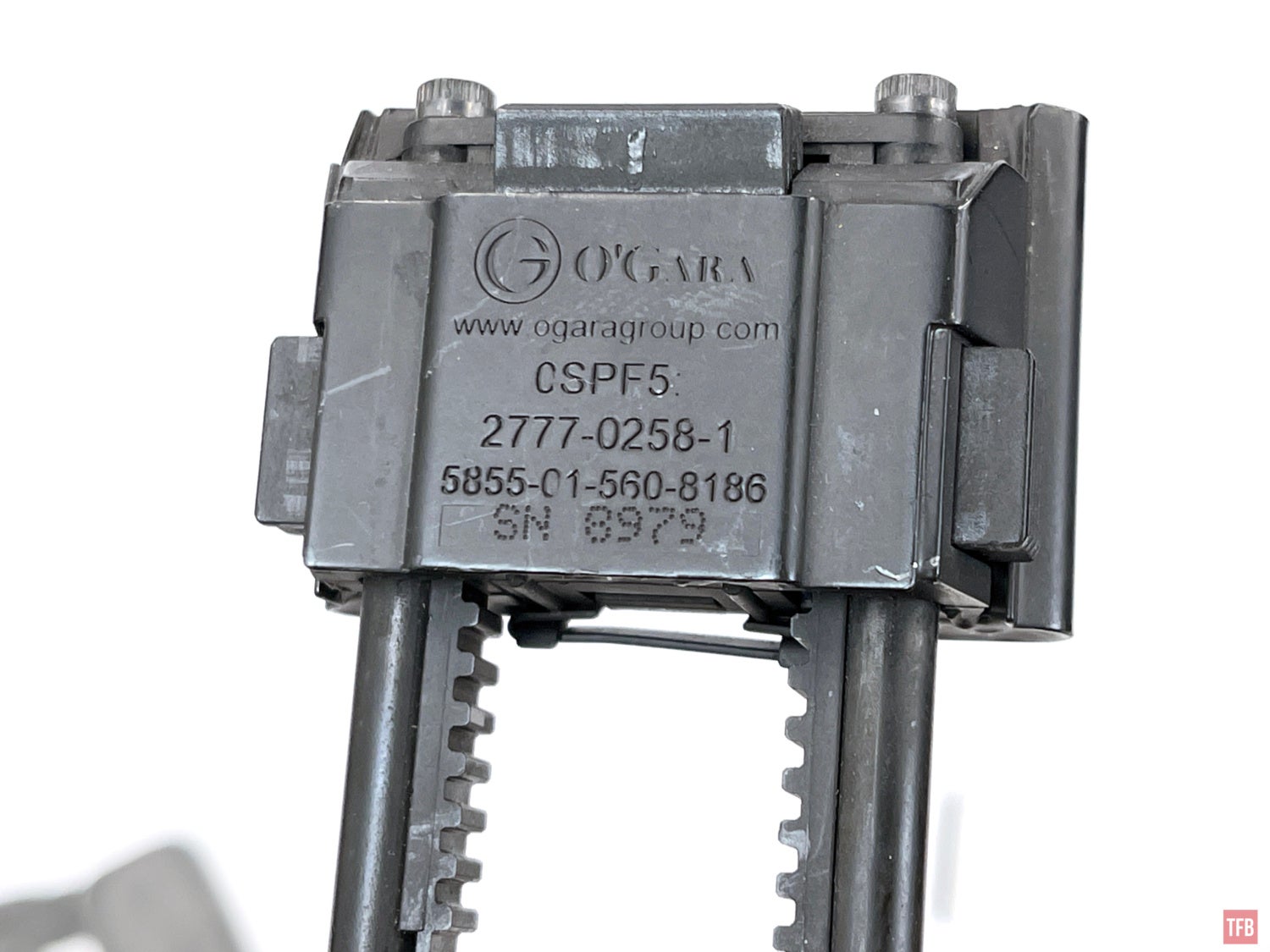
STS and O’GARA offered the PVS-21 with a skull crusher. It is very similar to the PVS-7A skull crusher only with a longer travel sled.

PVS-7A on the left, PVS-21 on the right.
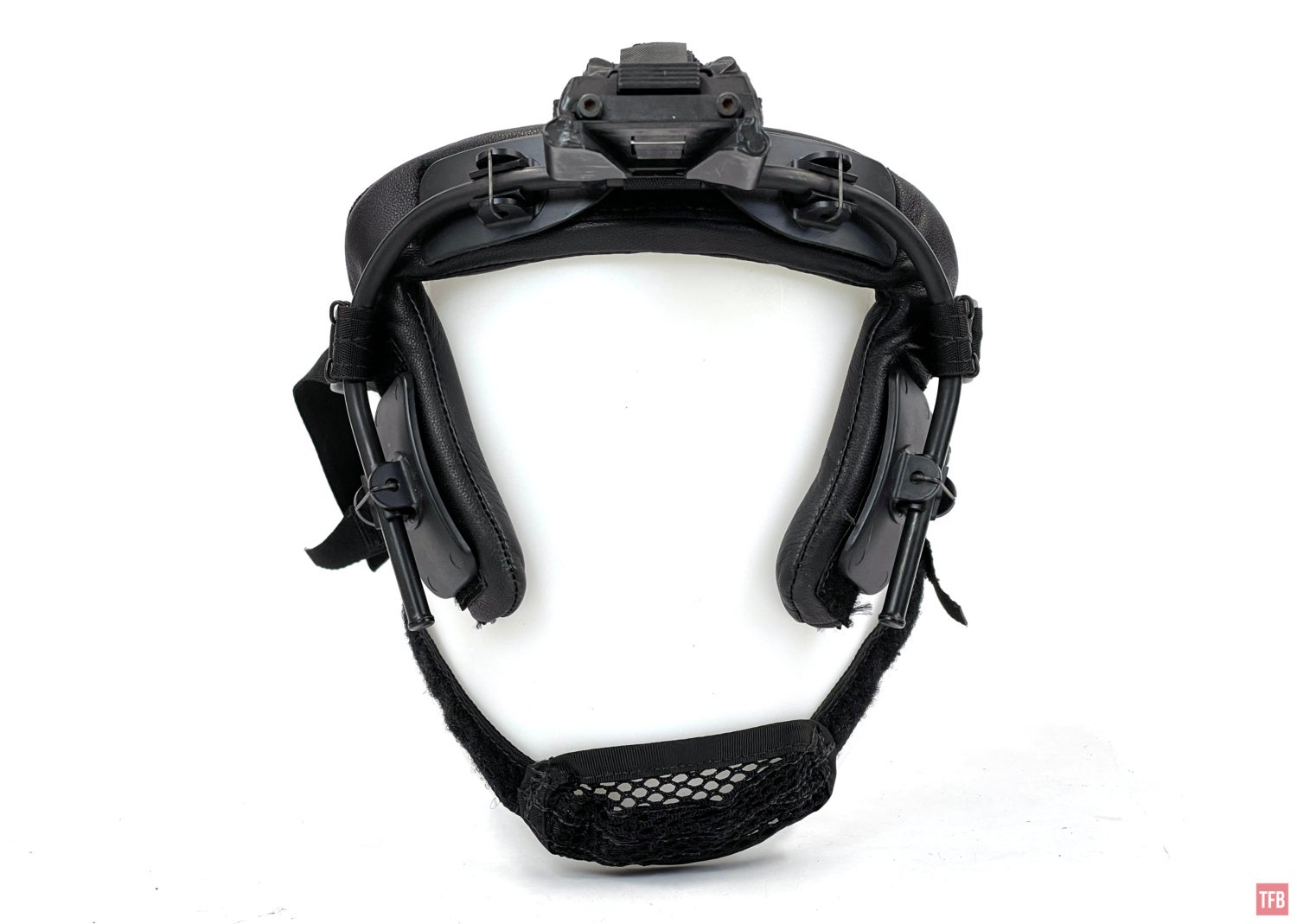

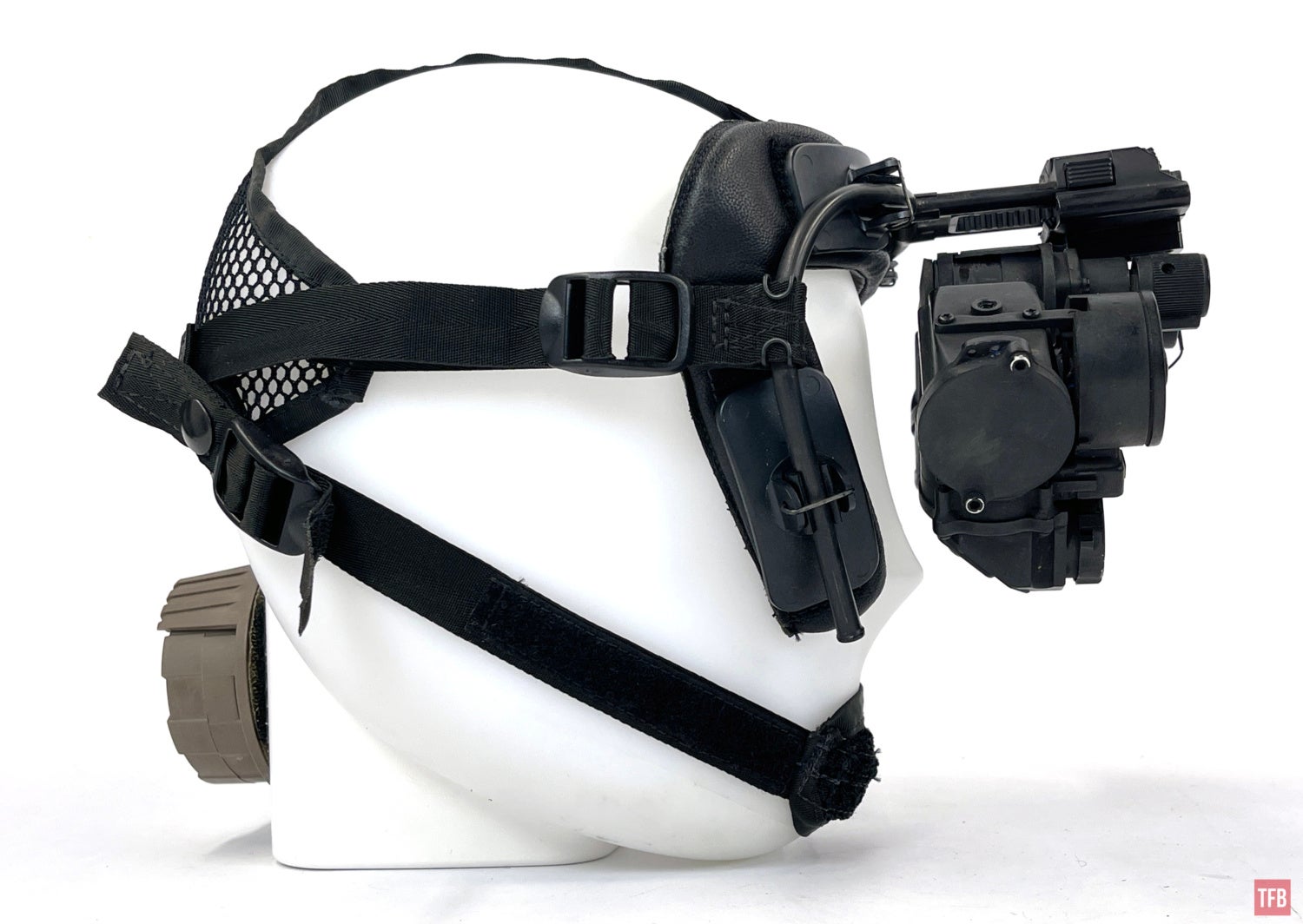

PVS-21 Revisited – Mounts
There are a number of mounts for the PVS-21. So for this PVS-21 Revisited article, I will show you the different variants.
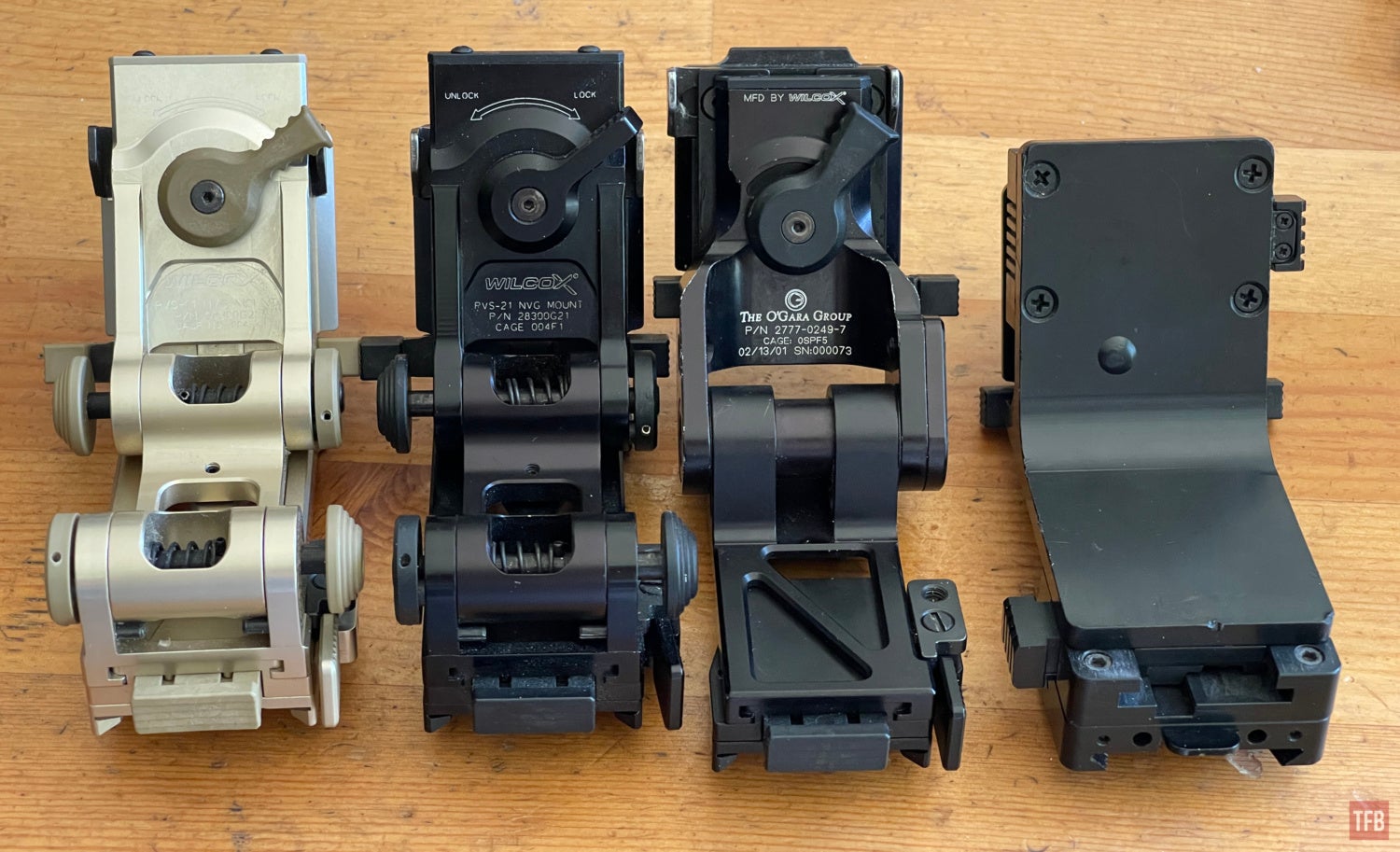
The two on the right are the same just different colors.
Fixed Mount
As far as I can tell, all the mounts were made by Wilcox. This one seems rather crude. It is just a giant angled piece of metal but the adjustments are finer than a standard G24.

The fixed mount has a standard Wilcox QD plate to interface with NV shrouds on helmets.


You can see the fine teeth of the fixed mount. This allows for finer adjustment fore and aft of the PVS-21 position to your face.

One benefit to the fixed mount is there is zero wobble compared to folding mounts.




Did you notice this PVS-21 fixed mount does not have any tilt adjustment? None of the PVS-21 mounts have tilt adjustment. That is because the dovetail on the PVS-21 bridge is adjustable for tilt. There is a worm screw and as you turn the dial at the bottom, it raises or lowers that protrusion which causes the dovetail to tilt thus moving the bridge and night vision goggle.

Here is the range of motion the tilt screw will give you on a PVS-21.

O’Gara Group Semi-Fixed Mount

Here is another PVS-21 mount. Lasered for the O’GARA Group. It is a strange design. It has vertical adjustment like a G24 but it has the forward and aft adjustment like the G21M mount which you will see after this.


The perplexing aspect of this PVS-21 mount is that it has a small tilt adjustment. It is on the left side of the mount and requires a slotted screwdriver to loosen and tighten. This seems superfluous since the PVS-21 has its own tilt adjustment in the dovetail.

Wilcox G21M Mount

This is the more common mount for the PVS-21. It is available in tan anodizing (almost a gold champagne) or black anodized. Just like the fixed mount, it does not have tilt but it does have fore and aft adjustments. And that adjustment does not rely on teeth so it has infinite adjustment. It does have hinges though for two styles of stowing the PVS-21.

The PVS-21 G21M mount has a standard hinge like a G24 mount. This is for low stowage of the goggle.
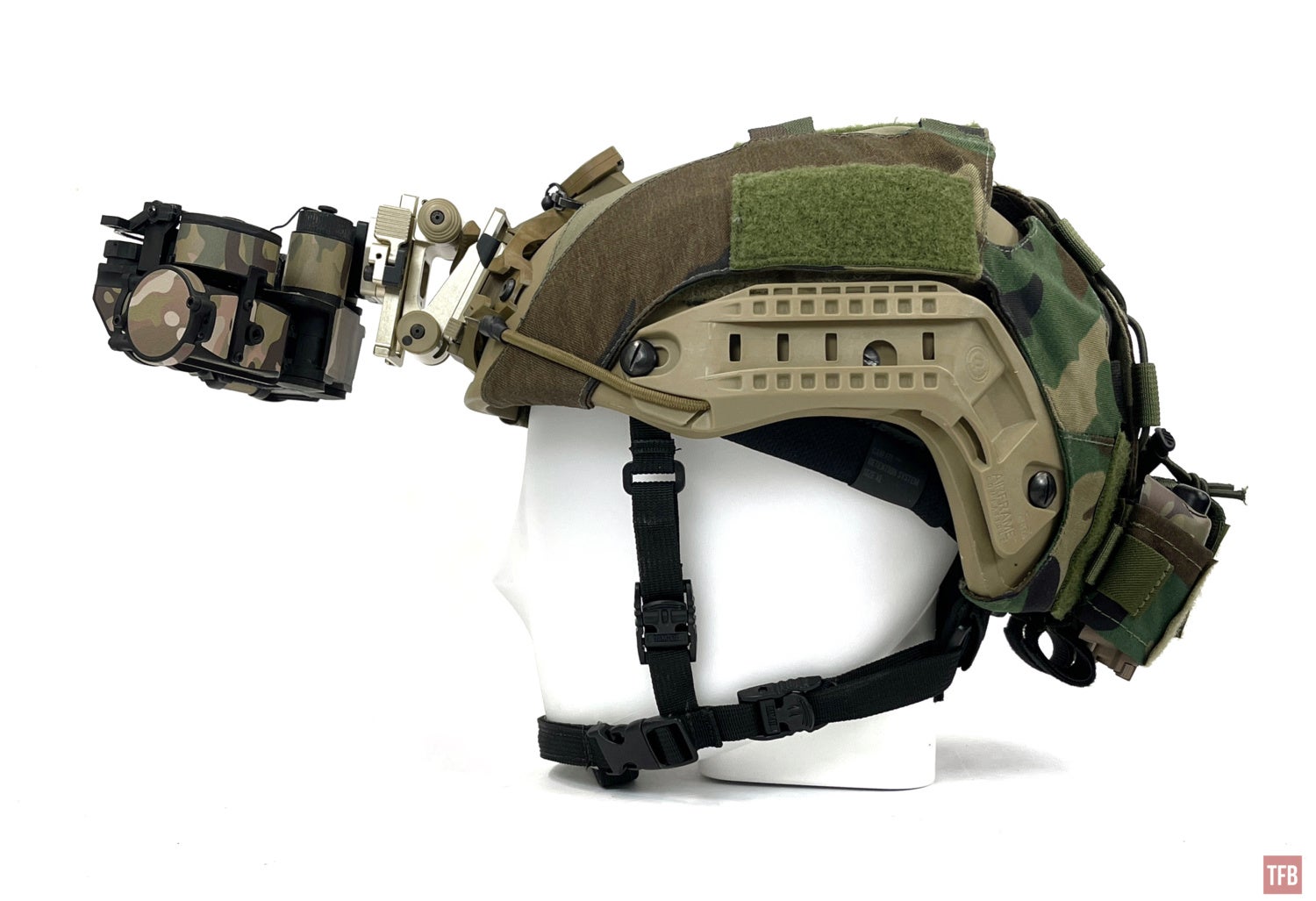
The forward hinge can only be used when the normal hinge is opened. Now you can flip the PVS-21 up against the helmet.
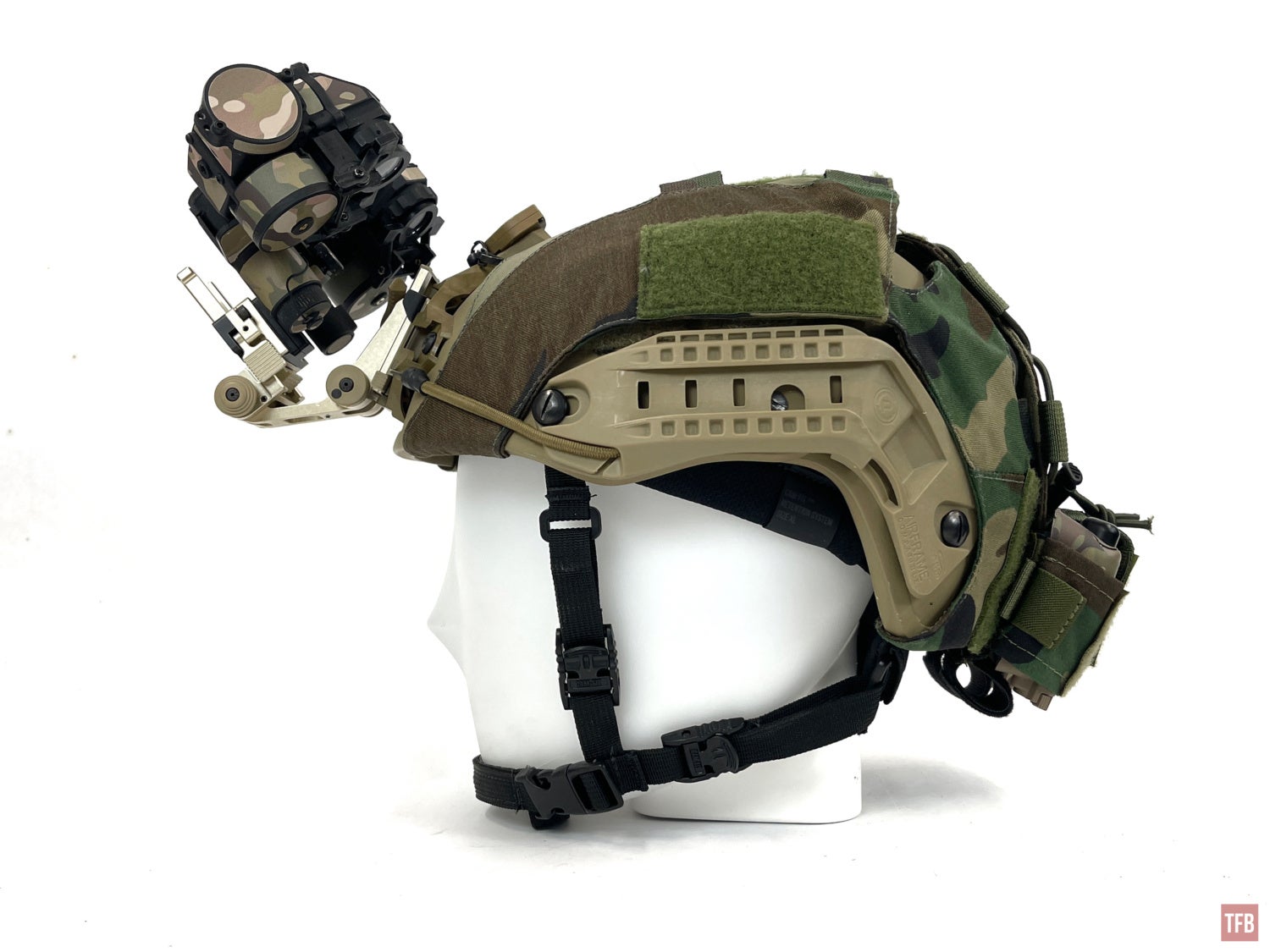
Variant Mounts
Online collectors sent me these two photos. These two mounts appear to be the same with different markings. One is marked O’GARA while the other has the Steiner logo. They look like a hybrid between the O’GARA group semi-fixed mount and the G21M. They have the double hinge but the inboard hinge has a normal G24-style push button. On the opposite side, these mounts appear to have a tilt adjustment like the O’GARA Group semi-fixed mount.


PVS-21 Revisited – Final Thoughts
The PVS-21 is an interesting night vision design. It shows a trend in Europe for the desire to have low-profile night vision goggles. The housing is a little different as it involves a see-through beam combiner HUD window. It has its uses. You can still see through the device when it is turned off. However, the housing has its own compromises. It is rather heavy compared to traditional night vision binoculars and the housing of the PVS-21 blocks some of your peripheral vision. I wish there was a manual gain adjustment so I could take better advantage of the fusion HUD window. There needs to be a certain level of brightness for light to outshine the intensified image from the tubes.
I found a website that has a number of brochures from O’GARA Group and a large number of Steiner products were actually STS designs. Things like the North Star, Nova and Star (MCID) beacons are from STS. Of course, all the accessories for the PVS-21 are from STS. Remember the CEHUD? There was an earlier version by STS.

Image by STS

Image by STS
Apparently, they even made a day viewer.
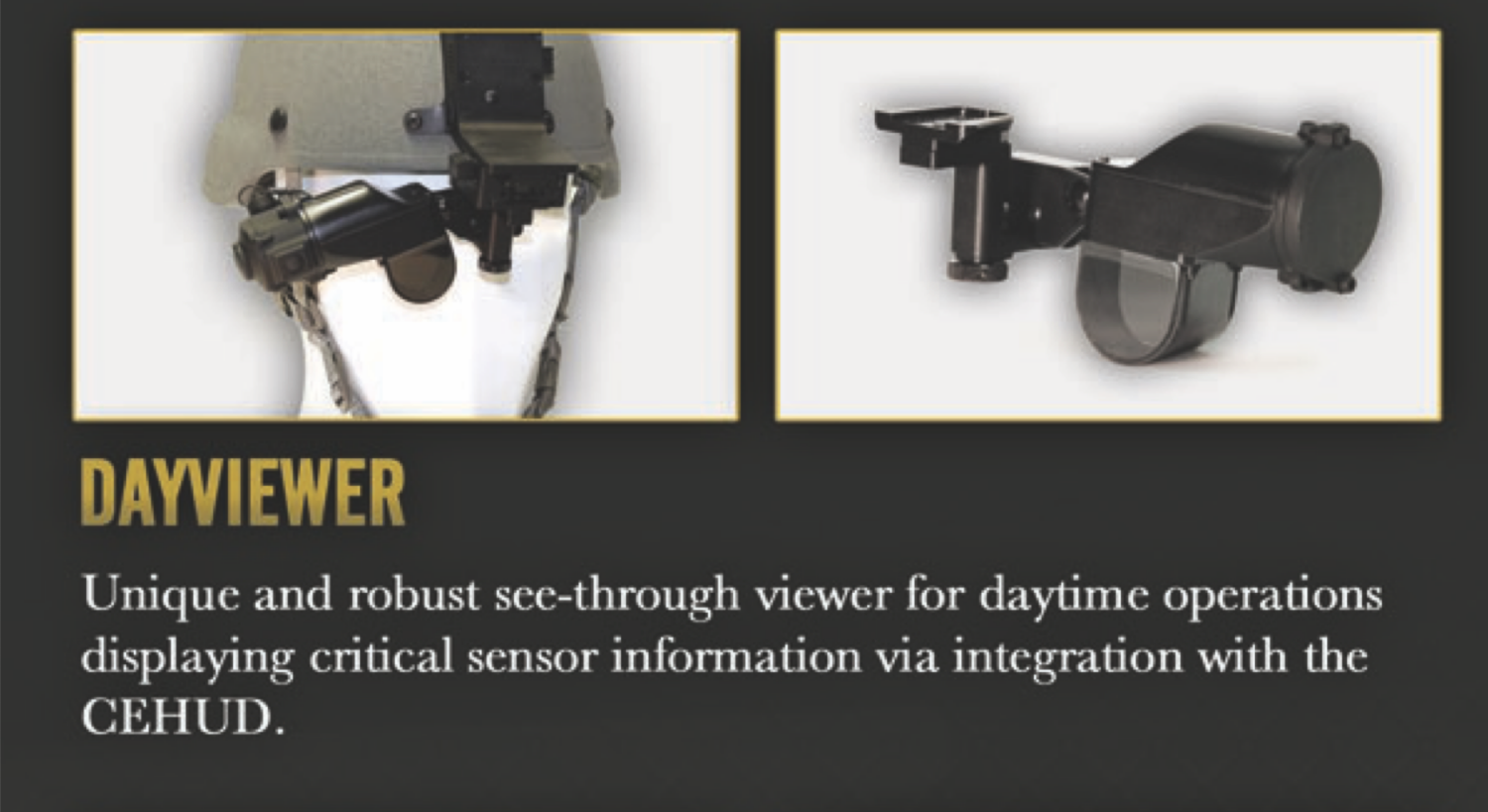
I have one of these older HUDs on the way so I will update this article when I get it. If you are looking for a PVS-21, reach out to Sean of GSH.
 Your Privacy Choices
Your Privacy Choices
